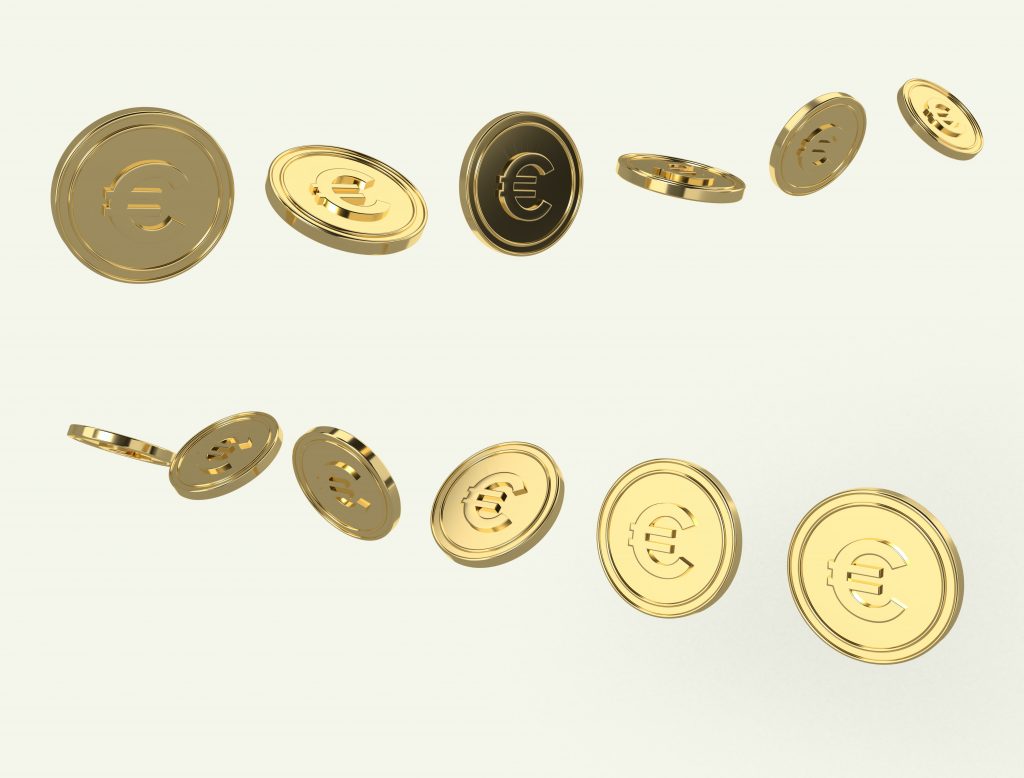So, you’ve decided to venture into the world of gold investment and are looking for the best funds to add to your portfolio. Well, my friend, you’ve come to the right place! Today, we’re going to dive into the fascinating world of Gold ETFs, or Exchange Traded Funds, and explore some of the top funds that you should consider for your investment journey. Whether you’re a seasoned investor or just starting out, this article will provide you with all the information you need to make informed decisions and maximize your potential returns. So, grab a cup of coffee, sit back, and get ready to explore the possibilities of investing in gold ETFs!

This image is property of images.unsplash.com.
What are Gold ETFs?
Gold ETFs, or exchange-traded funds, are investment vehicles that allow individuals to gain exposure to the price movements of gold without physically owning the metal. These funds are designed to track the performance of gold prices and are traded on stock exchanges, just like stocks. They offer an easy and cost-effective way for investors to add gold to their investment portfolios.
Definition of Gold ETFs
A Gold ETF is a type of exchange-traded fund that invests in physical gold bullion or tracks the price of gold through derivatives. The fund holds the gold on behalf of investors and issues shares that represent a certain amount of gold. Each share of the ETF is backed by a specific quantity of gold, providing investors with a convenient way to hold the precious metal without the need for physical storage.
How Gold ETFs work
Gold ETFs work by owning and storing physical gold bullion or by using derivatives, such as futures contracts, to track the price of gold. When you invest in a gold ETF, you are essentially buying shares in the fund, which represents a proportional ownership stake in the underlying gold holdings. The ETF issuer manages the buying and selling of gold and ensures that the share price reflects the real-time value of the gold.
Advantages of Gold ETFs
Gold ETFs offer several advantages for investors. Firstly, they provide a simple and cost-effective way to invest in gold. Unlike buying physical gold, which requires storage and insurance costs, gold ETFs can be bought and sold through a brokerage account without the need for physical delivery. Secondly, gold ETFs provide liquidity, as they can be easily traded on stock exchanges throughout the trading day. Finally, gold ETFs offer diversification benefits, as gold traditionally has a low correlation to other asset classes, such as stocks and bonds.
Why Invest in Gold ETFs?
Gold as a safe-haven investment
Gold has long been considered a safe-haven investment during times of economic uncertainty. When the stock market is volatile or inflation is on the rise, investors often turn to gold as a hedge against potential losses. Gold has a timeless appeal and is often seen as a store of value that can help protect against currency devaluation and financial crises.
Diversification benefits
One of the key reasons to invest in gold ETFs is for diversification. Gold has historically had a low correlation to other asset classes, meaning that it often moves independently of stocks, bonds, and currencies. By including gold in your investment portfolio, you can potentially reduce overall portfolio risk and increase the likelihood of generating positive returns, even when other assets are performing poorly.
Liquidity and ease of trading
Gold ETFs provide investors with liquidity and ease of trading. Unlike physical gold, which can be difficult to sell and may require additional costs for storage and insurance, gold ETFs can be bought and sold on stock exchanges with the click of a button. This makes it easy for investors to enter and exit positions, providing flexibility and convenience.

This image is property of images.unsplash.com.
Factors to Consider Before Investing
Before investing in gold ETFs, it is important to consider several factors that can impact the fund’s performance and your overall investment strategy.
Expense Ratio
The expense ratio of a gold ETF refers to the annual fee charged by the fund manager for managing the fund. This fee is expressed as a percentage of the fund’s average net assets and is deducted from the fund’s returns. When comparing different gold ETFs, it is important to consider the expense ratio and choose funds that offer competitive fees, as higher expense ratios can eat into your overall returns over time.
Tracking Error
Tracking error refers to the divergence between the performance of a gold ETF and the performance of the underlying index or benchmark it is designed to track. A low tracking error indicates that the ETF closely follows the price movements of gold, while a higher tracking error may suggest that the ETF does not replicate the price movements of gold as effectively. Investors should consider the tracking error of a gold ETF to ensure it accurately reflects the performance of gold prices.
Trading Volume
The trading volume of a gold ETF refers to the number of shares that are traded on a daily basis. Higher trading volume generally indicates that the ETF is more liquid, meaning that there is a greater supply of shares available for buying and selling. This can be important for investors who wish to enter or exit positions quickly without impacting the share price significantly.
Fund Size
The size of a gold ETF, measured by its assets under management (AUM), can also be an important factor to consider. Larger ETFs tend to have more liquidity and may have lower expense ratios due to economies of scale. Additionally, larger ETFs often have a longer track record and may be more established in the market, providing investors with greater confidence and stability.
Top Gold ETFs for Consideration
There are several gold ETFs available in the market, each with its own unique features and characteristics. Here are some of the top gold ETFs that investors may consider for their investment portfolios:
SPDR Gold Shares (GLD)
SPDR Gold Shares (GLD) is one of the largest and most popular gold ETFs in the market. It is designed to track the price of gold bullion and aims to provide investors with a cost-effective and convenient way to own gold. GLD is backed by physical gold held in vaults, making it a popular choice for investors who prefer the security of owning physical gold.
iShares Gold Trust (IAU)
iShares Gold Trust (IAU) is another well-known gold ETF that aims to track the performance of the price of gold. IAU is also backed by physical gold bars held in vaults, offering investors exposure to the price movements of gold without the need for physical ownership. With a low expense ratio and high trading volume, IAU is a popular choice among investors.
Aberdeen Standard Physical Gold Shares (SGOL)
Aberdeen Standard Physical Gold Shares (SGOL) is a gold ETF that seeks to track the performance of physical gold bullion. It is designed to offer investors a convenient and cost-effective way to invest in gold. SGOL holds its gold in secure vaults in Switzerland and offers investors the option to redeem their shares for physical gold if desired.
Invesco DB Gold Fund (DGL)
Invesco DB Gold Fund (DGL) is a unique gold ETF that uses futures contracts to provide exposure to gold prices. Unlike other gold ETFs that hold physical gold, DGL tracks the performance of a rules-based index that consists of gold futures contracts. This approach allows for efficient management of the fund and eliminates the need for physical storage.
VanEck Merk Gold Trust (OUNZ)
VanEck Merk Gold Trust (OUNZ) is a gold ETF that offers investors the opportunity to take physical delivery of gold. OUNZ allows investors to convert their shares into physical gold coins or bars, providing a unique feature that distinguishes it from other gold ETFs. This can be appealing for investors who prefer to have the option of holding physical gold.

This image is property of images.unsplash.com.
SPDR Gold Shares (GLD)
Overview of the Fund
SPDR Gold Shares (GLD) is the largest physically backed gold ETF in the world. It is designed to track the performance of the price of gold bullion and provides investors with a cost-effective and convenient way to invest in gold. GLD is listed on the New York Stock Exchange (NYSE) and can be bought and sold throughout the trading day.
Performance and Historical Data
GLD has a strong track record of performance, with its price closely following the price movements of gold. Over the past decade, the fund has delivered solid returns, reflecting the positive performance of gold during that period. Investors can access historical data on GLD’s website or through financial data providers to analyze its performance over different time frames.
Expense Ratio and Fund Size
The expense ratio of GLD is relatively low compared to other gold ETFs, making it an attractive option for cost-conscious investors. The fund’s assets under management (AUM) are substantial, reflecting its popularity and widespread adoption among investors. The large fund size ensures that GLD is highly liquid and allows for efficient trading on stock exchanges.
iShares Gold Trust (IAU)
Overview of the Fund
iShares Gold Trust (IAU) is another prominent gold ETF that seeks to track the price of gold bullion. It is backed by physical gold held in a vault, similar to GLD. IAU is listed on the NYSE and can be easily bought and sold through brokerage accounts. The fund offers investors a convenient and low-cost way to gain exposure to the price movements of gold.
Performance and Historical Data
IAU has a strong performance history, closely mirroring the price movements of gold. Like GLD, investors can access historical data on IAU’s website or through financial data providers to analyze its performance over different time periods. It is important to note that past performance is not indicative of future results, and investors should consider various factors before making investment decisions.
Expense Ratio and Fund Size
IAU has a low expense ratio, making it an attractive choice for investors looking to minimize costs. The fund’s assets under management are substantial, highlighting its popularity and broad investor base. IAU’s large fund size contributes to its high liquidity, allowing investors to easily buy and sell shares on the exchange.
Aberdeen Standard Physical Gold Shares (SGOL)
Overview of the Fund
Aberdeen Standard Physical Gold Shares (SGOL) is a gold ETF that aims to track the performance of physical gold bullion. The fund holds its gold in secure vaults in Switzerland and provides investors with a convenient and cost-effective way to invest in gold. SGOL is listed on the NYSE and can be accessed through brokerage accounts.
Performance and Historical Data
Like other gold ETFs, SGOL’s performance closely follows the price movements of gold. Investors can review historical data on the fund’s website or through financial data providers to evaluate its performance over different time frames. It is important to note that the value of gold can fluctuate, and past performance is not indicative of future results.
Expense Ratio and Fund Size
SGOL has a competitive expense ratio, making it an attractive choice for investors seeking low-cost exposure to gold. The fund has a significant asset base, indicating its popularity among investors. The large fund size contributes to SGOL’s liquidity and efficient trading on stock exchanges.
Invesco DB Gold Fund (DGL)
Overview of the Fund
Invesco DB Gold Fund (DGL) is a unique gold ETF that utilizes futures contracts to provide exposure to gold prices. Instead of holding physical gold, DGL tracks the performance of a rules-based index that consists of gold futures contracts. This approach allows for efficient management of the fund’s assets and eliminates the need for physical storage.
Performance and Historical Data
DGL’s performance is linked to the price movements of gold futures contracts rather than physical gold itself. Investors can review historical data on the fund’s website or through financial data providers to assess its performance over different time periods. It is important to understand the risks associated with investing in futures contracts and how they may impact the fund’s performance.
Expense Ratio and Fund Size
DGL has a competitive expense ratio compared to other gold ETFs, reflecting its use of futures contracts as a cost-effective way to gain exposure to gold prices. The fund’s asset base is significant, providing investors with liquidity and efficient trading. It is essential for investors to consider the unique characteristics of DGL and understand how its structure differs from physically backed gold ETFs.
VanEck Merk Gold Trust (OUNZ)
Overview of the Fund
VanEck Merk Gold Trust (OUNZ) is a gold ETF that offers investors the unique feature of taking physical delivery of gold. OUNZ allows shareholders to convert their shares into physical gold coins or bars, providing an added layer of flexibility for investors who prefer to hold physical gold. The fund is listed on the NYSE and can be accessed through brokerage accounts.
Performance and Historical Data
OUNZ’s performance is closely tied to the price movements of gold, similar to other gold ETFs. Investors can review historical data on the fund’s website or through financial data providers to analyze its performance over different time periods. It is important to consider the costs and logistics associated with taking physical delivery of gold when evaluating OUNZ as an investment option.
Expense Ratio and Fund Size
OUNZ has a competitive expense ratio, considering its unique feature of physical gold delivery. The fund’s asset base is notable, demonstrating investor interest in its distinctive offering. OUNZ’s size contributes to its liquidity and enables efficient trading on stock exchanges.
How to Invest in Gold ETFs
Choosing a brokerage account
To invest in gold ETFs, you will need to open a brokerage account with a reputable financial institution. Look for a brokerage that offers a wide range of investment options, low trading fees, and user-friendly platforms. Consider additional factors such as customer service, research tools, and educational resources to enhance your investment experience.
Placing an order
Once you have selected a brokerage account, you can place an order to purchase gold ETF shares. Determine the amount you wish to invest and set a limit or market order, depending on your desired execution method. Take into account factors such as the current price of the ETF, any applicable fees, and the number of shares you intend to buy.
Monitoring performance and making adjustments
After investing in gold ETFs, it is important to regularly monitor the performance of your investment. Keep an eye on the price of gold and any significant market events that may impact its price movements. Consider your investment goals and risk tolerance when making adjustments to your gold ETF holdings, such as rebalancing or adding to your position.
Investing in gold ETFs can be a valuable addition to your investment portfolio, providing diversification and potential protection during uncertain economic times. By understanding the basics of gold ETFs, considering key factors before investing, and selecting the right funds for your goals, you can navigate the world of gold investing with confidence. Remember to consult with a financial advisor or do thorough research before making any investment decisions to ensure they align with your specific needs and objectives.



